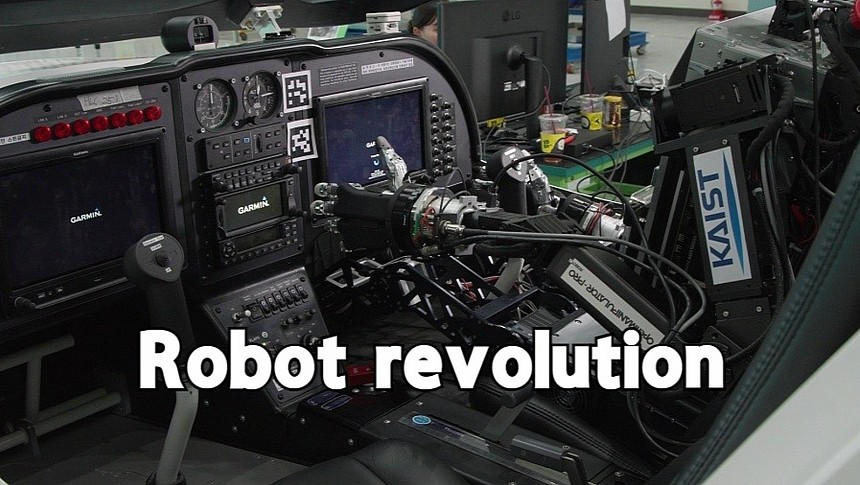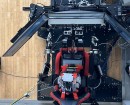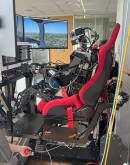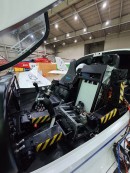People fear that robots will take their jobs one day, and this is a frightening prospect for many professions. Although highly repetitive tasks are considered best suited to be performed by robots, even highly specialized jobs such as flying an airplane are at risk. A team of engineers and researchers in Korea is developing a humanoid robot that can fly aircraft without modifying the cockpit. It could also be trained to drive a car or military equipment.
The robot revolution seems imminent, with artificial intelligence and robotics gaining traction in the past year. While some fear the robots will try to eliminate us, others see the benefits, as they can do the hard work for us. The latter could be good or bad, depending on your profession. A robot can lift heavier loads, work longer hours, and doesn't ask for a raise, so it's safe to assume that employers will love them. Many jobs are at risk of being given to robots or software, with positions requiring simple, repetitive tasks most likely to be performed by robots.
If you think your job is secure just because you're a doctor or an IT developer, think again. Whatever humans do, robots or artificial intelligence can do better, cheaper, and longer. A team of engineers and researchers from the Korea Advanced Institute of Science & Technology (KAIST) seems pretty advanced in developing a humanoid robot that can fly an airplane. They called it "Pibot" because it's a pilot robot, but it can be trained to do any task a human can do.
Pibot can manipulate all the controls in the cockpit designed for humans. Its arms and fingers can operate flight controls and instruments with utmost precision, even with severe vibrations in an aircraft. The robot relies on external cameras to monitor instruments and manage essential switches on the control panel. Not only that, but it can memorize complex manuals, enhancing its ability to fly different aircraft types with minimal training. It can also memorize all of the Jeppesen navigation charts around the world, which is impossible for human pilots.
"Humans can fly many airplanes, but they do have these habits built into them," explains David Shim, an associate professor of electrical engineering at KAIST. "So when they try to convert to different airplanes they have to take another qualification. Sometimes this is not that simple because our habit remains in our mind that we can't simply change from one to the other. With the pilot robot, if we teach individual airplane configuration, then you can fly the airplane by simply clicking the airplane's type," Shim told Euronews.
Pibot can understand and memorize flight manuals written for humans thanks to the recent advances in artificial intelligence and, specifically, the large language models (LLMs). ChatGPT, in particular, allowed the team to advance the Pibot's development much faster than before. The robot can memorize any literature required for pilot training, from aircraft operation to emergency manuals, and respond immediately, faster than any human. Pibot has another considerable advantage: it is unaffected by emotions in dangerous situations.
Standing at 160 cm (5 feet and 3 inches) and weighing 65 kg (143 lbs.), Pibot can seamlessly replace humans in roles like driving automobiles, operating tanks, or even commanding ships at sea. It's like a walking, talking R2D2 copilot, if you will, although it doesn't need a human companion. Although many argue that a humanoid form is not very efficient for a robot, Pibot has the advantage that it can interact with all the things that were designed and built for humans.
The team expects to finish the robot's development in 2026, with its first role likely in the military. Unsurprisingly, the research project has been commissioned by the Agency for Defense Development (ADD), the Korean authority tasked with research into defense technology.
If you think your job is secure just because you're a doctor or an IT developer, think again. Whatever humans do, robots or artificial intelligence can do better, cheaper, and longer. A team of engineers and researchers from the Korea Advanced Institute of Science & Technology (KAIST) seems pretty advanced in developing a humanoid robot that can fly an airplane. They called it "Pibot" because it's a pilot robot, but it can be trained to do any task a human can do.
Pibot can manipulate all the controls in the cockpit designed for humans. Its arms and fingers can operate flight controls and instruments with utmost precision, even with severe vibrations in an aircraft. The robot relies on external cameras to monitor instruments and manage essential switches on the control panel. Not only that, but it can memorize complex manuals, enhancing its ability to fly different aircraft types with minimal training. It can also memorize all of the Jeppesen navigation charts around the world, which is impossible for human pilots.
"Humans can fly many airplanes, but they do have these habits built into them," explains David Shim, an associate professor of electrical engineering at KAIST. "So when they try to convert to different airplanes they have to take another qualification. Sometimes this is not that simple because our habit remains in our mind that we can't simply change from one to the other. With the pilot robot, if we teach individual airplane configuration, then you can fly the airplane by simply clicking the airplane's type," Shim told Euronews.
Pibot can understand and memorize flight manuals written for humans thanks to the recent advances in artificial intelligence and, specifically, the large language models (LLMs). ChatGPT, in particular, allowed the team to advance the Pibot's development much faster than before. The robot can memorize any literature required for pilot training, from aircraft operation to emergency manuals, and respond immediately, faster than any human. Pibot has another considerable advantage: it is unaffected by emotions in dangerous situations.
Standing at 160 cm (5 feet and 3 inches) and weighing 65 kg (143 lbs.), Pibot can seamlessly replace humans in roles like driving automobiles, operating tanks, or even commanding ships at sea. It's like a walking, talking R2D2 copilot, if you will, although it doesn't need a human companion. Although many argue that a humanoid form is not very efficient for a robot, Pibot has the advantage that it can interact with all the things that were designed and built for humans.
The team expects to finish the robot's development in 2026, with its first role likely in the military. Unsurprisingly, the research project has been commissioned by the Agency for Defense Development (ADD), the Korean authority tasked with research into defense technology.











